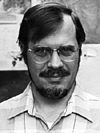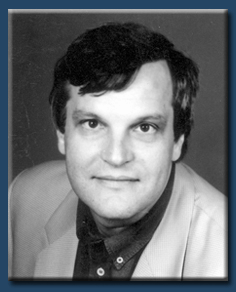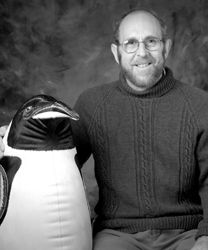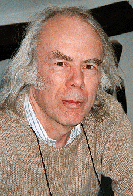|
 |
Edward Boyle
For his pioneering work in establishing modern marine
trace element geochemistry, in particular for exploiting relationships
between foraminiferal shell chemistry and sea water to provide insights
into glacial-interglacial changes in ocean chemistry and circulation;
and for establishing benchmark records of anthropogenic lead in the
oceans.
|
|
 |
Ulrich Christensen
For fundamental contributions to the understanding of
planetary convection, for elucidating the possibility of a separation of
the convection cells above and below the phase boundary at 670 km depth;
and for his work on convection phenomena on Mars and Jupiter.
|
|
 |
Stanley Hart
For his landmark contributions to isotope
geochemistry, in particular to the study of the Earth's mantle and his
development of the concept of end member type components that could be
defined from the isotope geochemistry of ocean island basalts; and for
pioneering of many applications of ion probe techniques to trace element
geochemistry.
|
|
 |
Claude Jaupart
For establishing the modern concepts of magma
physics, notably the thermal and fluid mechanical evolution of magma
reservoirs, the physics of magma outgassing and its applications on
volcanic eruptions, based on a unique ability to combine high-profile
physics with sophisticated experiments; and for much of our modern
understanding of the thermal regime and evolution of the continental
lithosphere.
|
|
 |
James Kennett
For his contributions using expertise in
biostratigraphy, based on foraminifera, and crucial discoveries in earth
history from the South Pole to the equator; from the temperature ocean
abyss to the methane in the atmosphere; from the scale of tens of
million of years down to the shortest scale available to a geologist.
|
| |
 |
Andrew Knoll
For his outstanding contributions in palaeobiology,
particularly the biodiversity and evolution of Proterozoic microbiota
and early metazoans, including their embryonic microfossils, set in the
frame of secular geochemical and environmental changes.
|
| |
 |
Nicholas Shackleton
For his pioneering contributions too numerous to list
but including the development of stratigraphy using oxygen isotopes and
astromonical calibration, exploitation of carbon isotope measurements on
foraminifera to define reasons for glacial-interglacial changes in
atmospheric carbon dioxide; and for his leadership and unselfish
collaboration in palaeoceanography, a field in which he played major
part in its definition.
|

